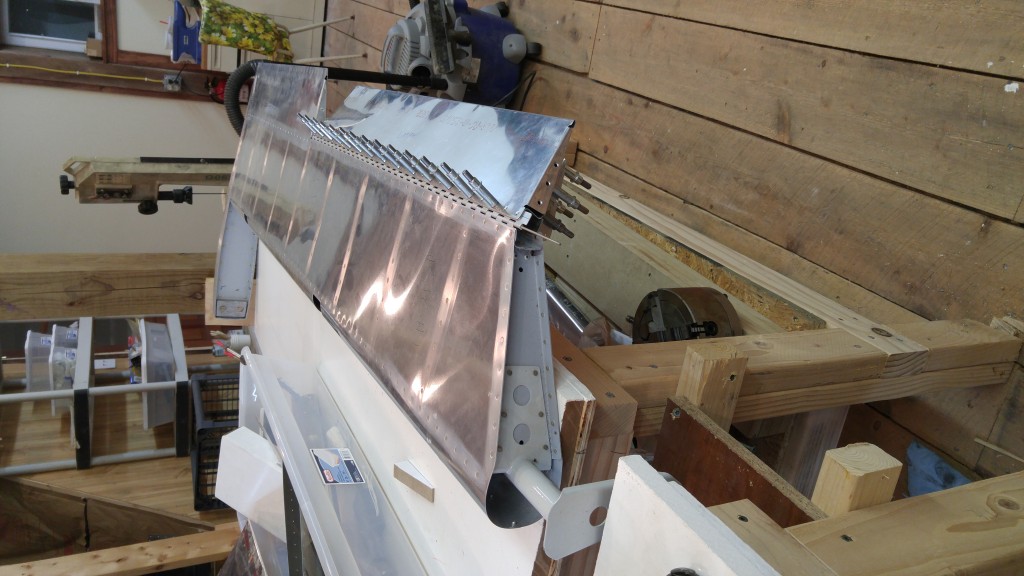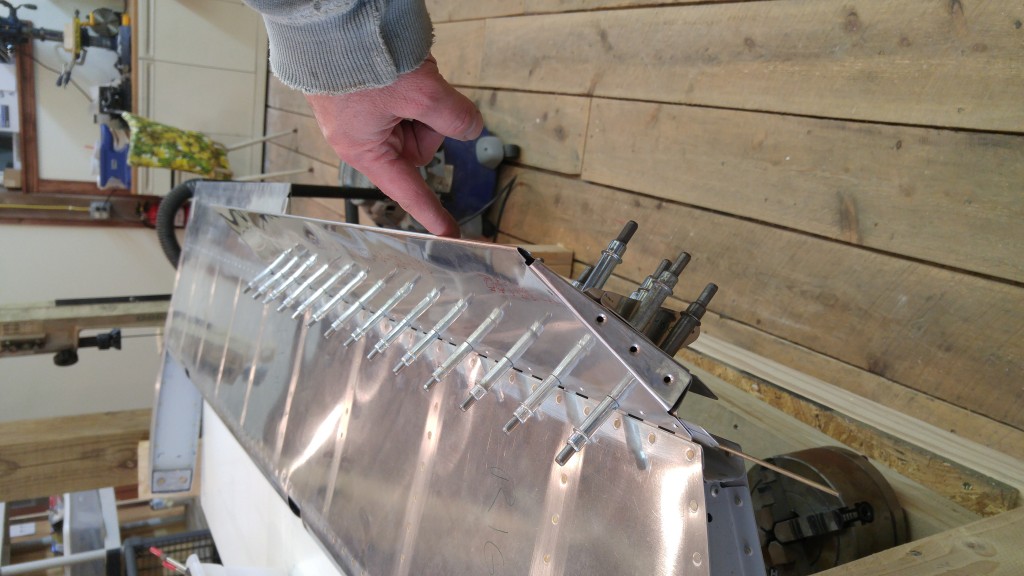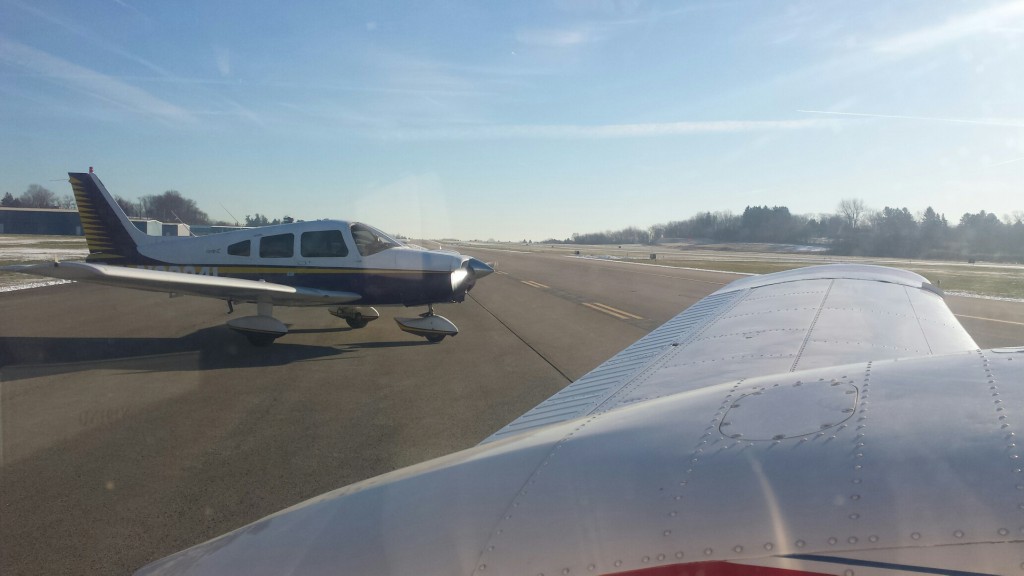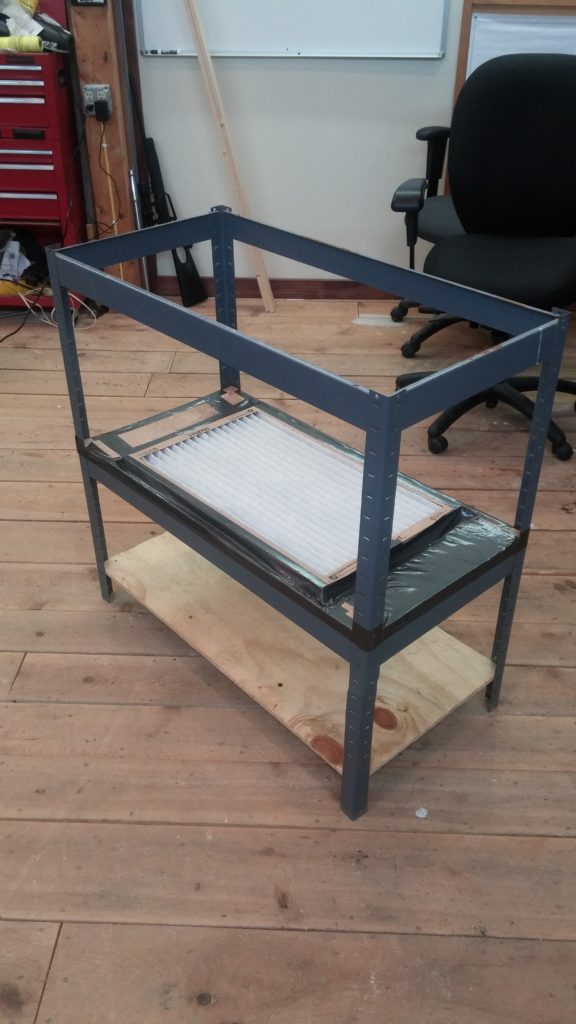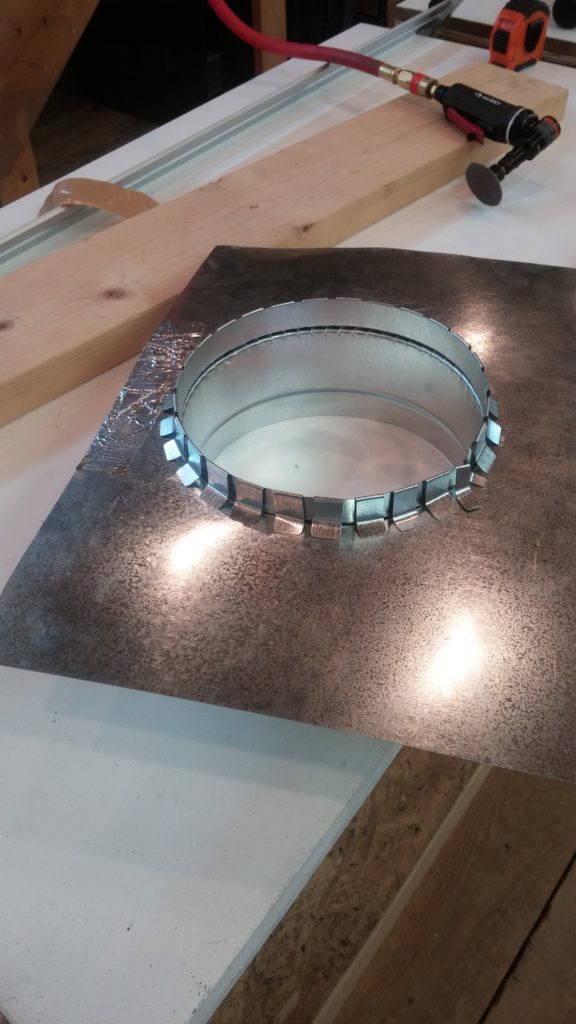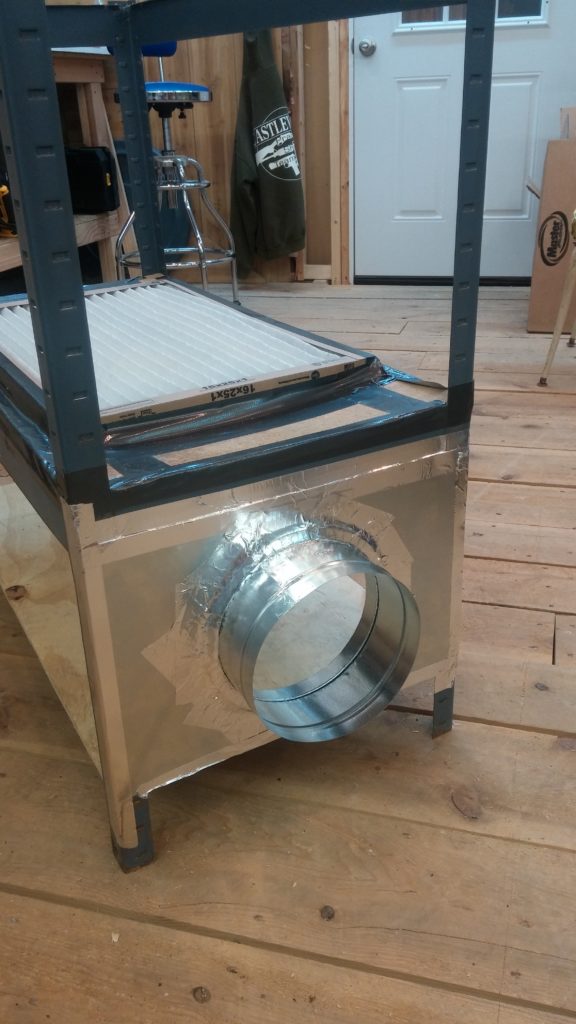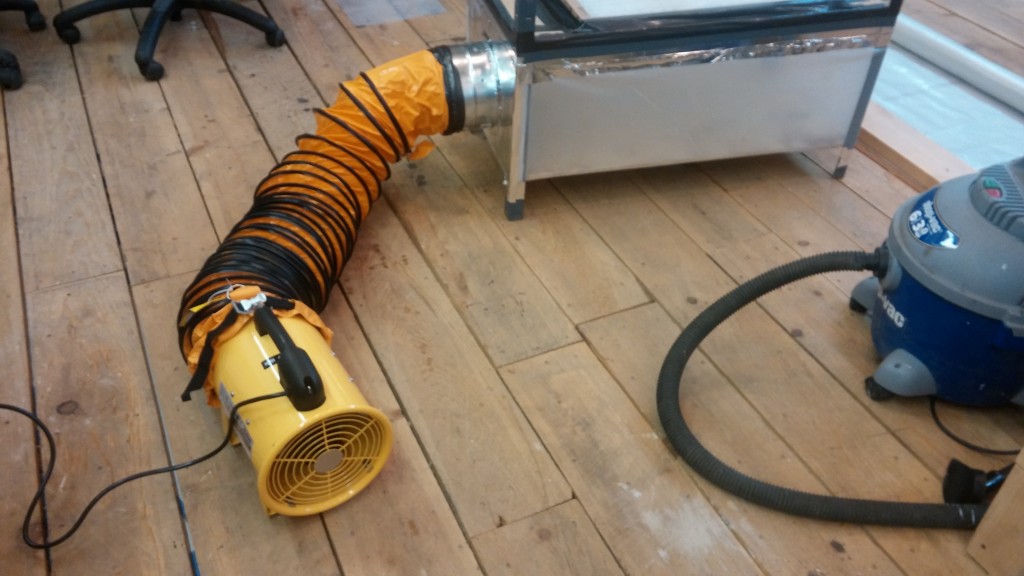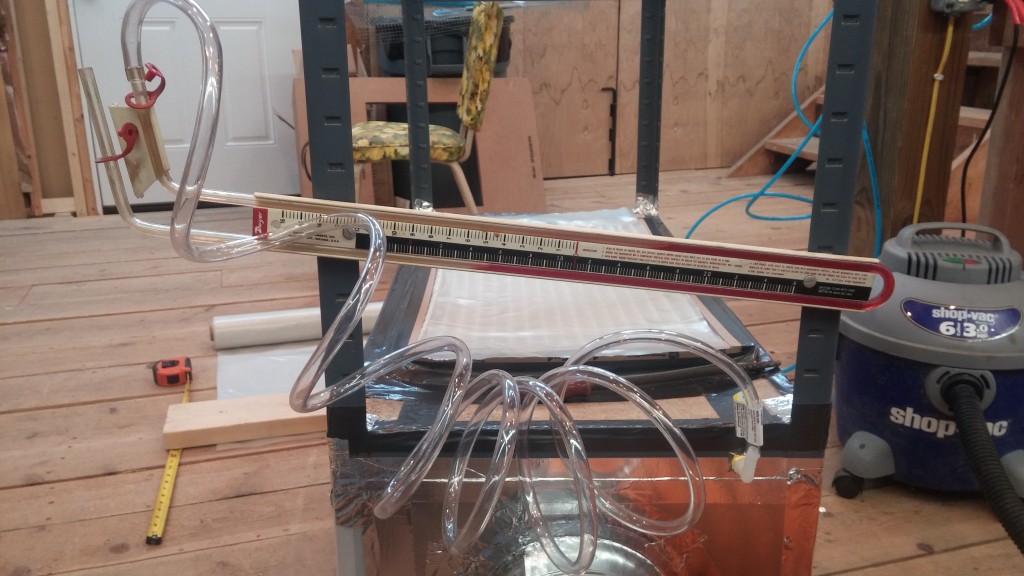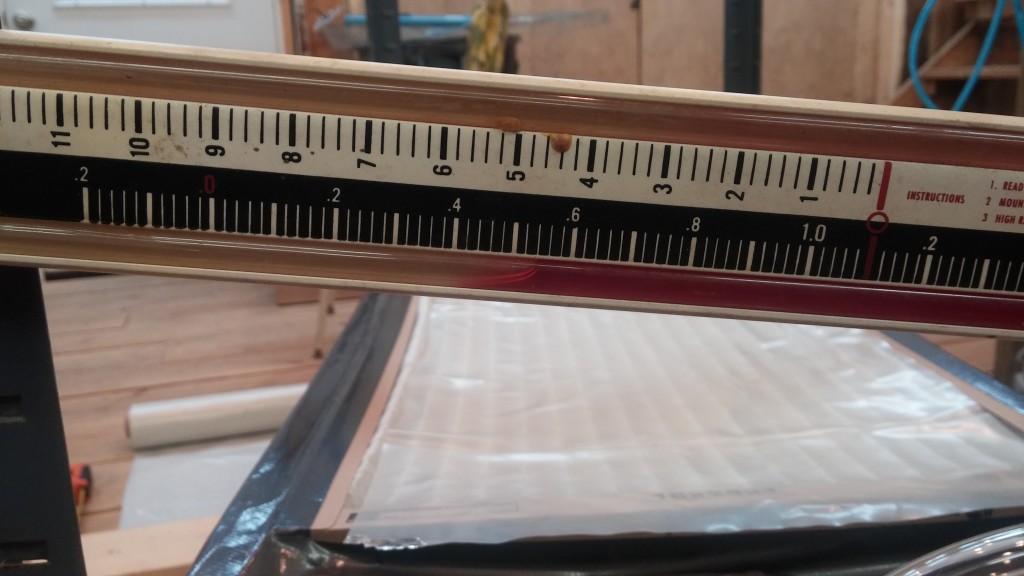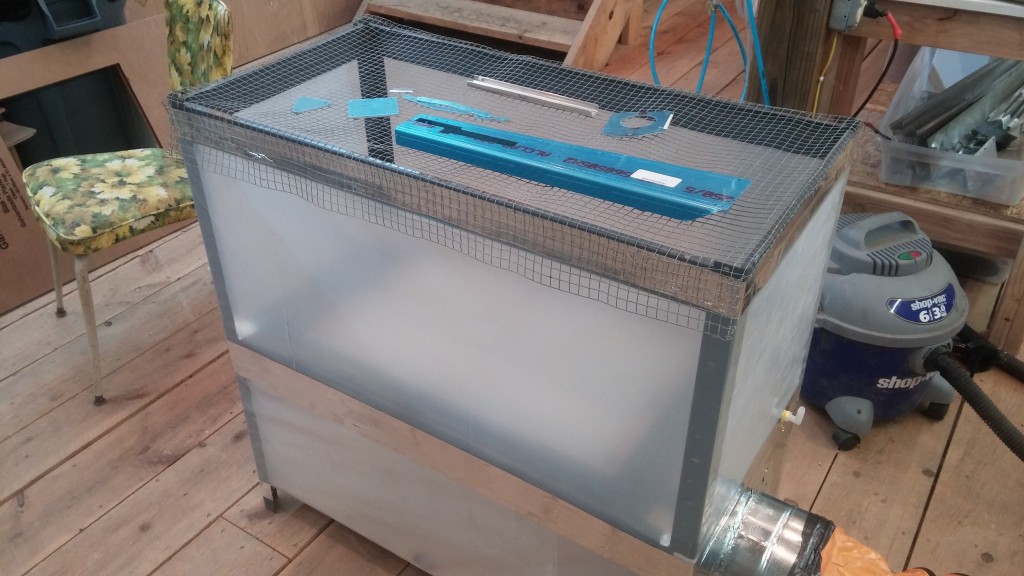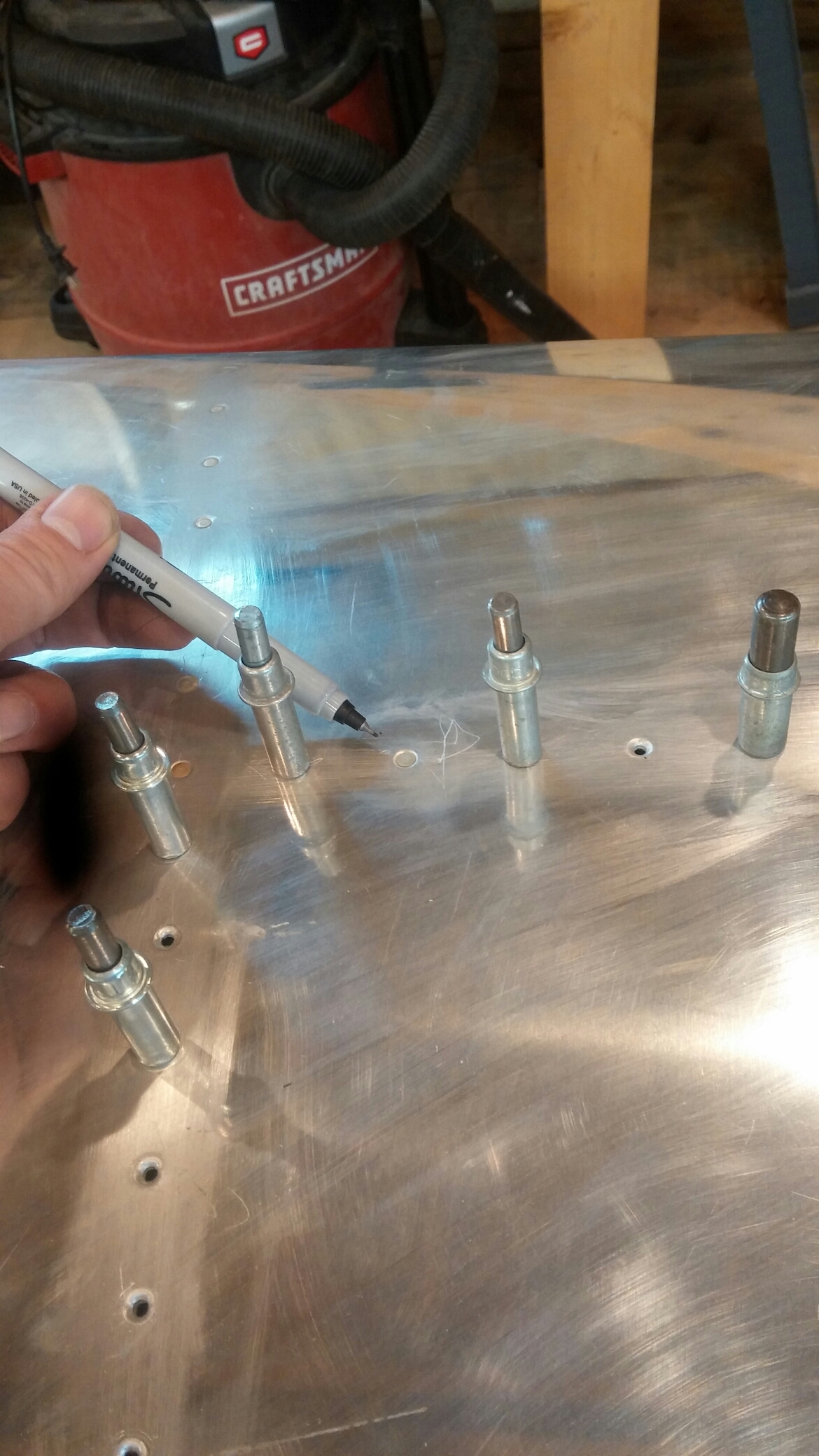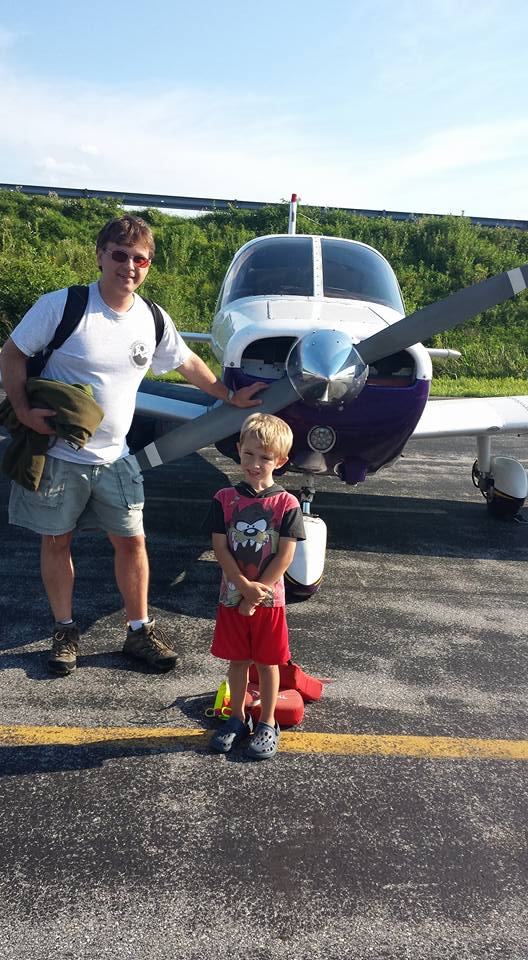Steps 2 and 3 on Page 13-3 of the RV-10 Wing plans can be rather confusing as to which holes to countersink. The language seems to be rather precise, and if taken literally, has you looking for holes that aren’t there.
The confusing sentence in Step 2 is
“Machine countersink those rib to spar flange attach rivet holes that are in line with the nutplate attach rivet holes and are inboard of the most outboard fuel tank attach nutplate.”
It’s not a difficult sentence to parse, particularly, and the latter third is quite clear. The first half, however, indicates that there should be some (rib to spar flange attach) holes IN LINE with the nutplate rivet holes. Well, if taken literally, there are NO SUCH HOLES. There are some holes that partially fit the description, but they are not exactly in line with the nutplate rivet holes–but their centerlines are about 1/16″ of an inch aft of the nutplate rivet holes’ centerlines. To someone like me who tends to read things very literally, this sentence has the potential to introduce significant confusion and frustration.
I had read aloud and thought about these steps for FAR too long, and finally decided that someone else surely has had the same confusion. So a simple search on Van’s Air Force Forums produced this gem of a thread, which I recommend to anyone as confused as I was.
A link from that thread, provided by Mike Jimenez, contains some helpful photos.
